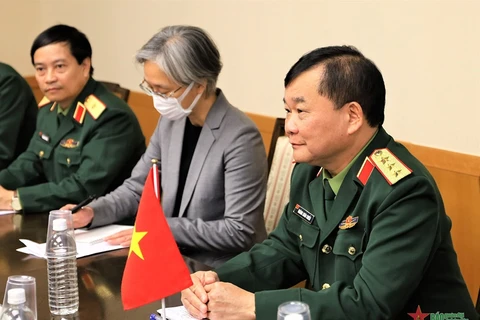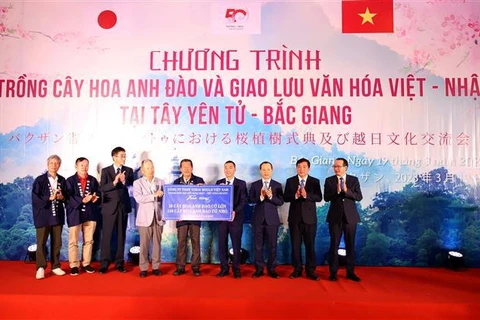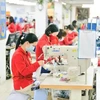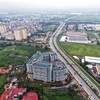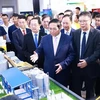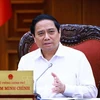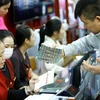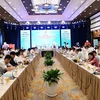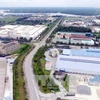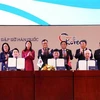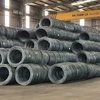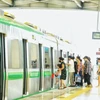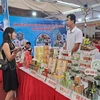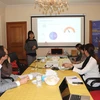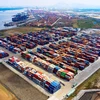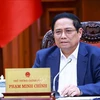Hanoi (VNA) – Vietnam is striving to lure more Japanese investments to digital transformation and green growth, as recommended in the Vietnam-Japan Joint Initiative (VJI).
Phase VIII of the initiative, launched in 2003, concluded in March 2023, under which 497 out of the 597 items were completed.
To promote its role, the Vietnamese Ministry of Planning and Investment proposed building a cooperation programme between small- and medium-sized enterprises (SMEs) of the two countries, focusing on digital transformation, support industry and personnel training.
Japanese SMEs have capacity, experience and high tech, and Vietnamese firms have abundant human resources, which is reciprocal during their development cooperation.
The ministry suggested the Japanese side take more specific solutions and supplement workforce to further support Vietnamese enterprises in improving their capacity and competitiveness, and participating intensively in value chains.
According to a survey conducted by the Japan External Trade Organisation (JETRO) in 2022, 60% of the Japanese firms said they plan to expand operations in Vietnam, the highest in Southeast Asia.
With the aim of joining the group of upper-middle income countries by 2030, Vietnam has paid attention to scientific-technological application, innovation, digital transformation, green transition, green economy, digital economy, circular economy and knowledge-based economy.
The country, therefore, is encouraging Japanese enterprises to step up investment in infrastructure, energy, manufacturing, high-tech agriculture, IT, smart urban development, financial services, banking and innovation.
The Vietnamese Government has committed to supporting businesses, contributing to advancing the Vietnam-Japan relationship to a new height.
Currently, Japan is running more than 5,000 valid projects in Vietnam with a total investment capital of over 69 billion USD, ranking third among the 141 countries and territories investing in the Southeast Asian nation.
Phase VIII of the initiative, launched in 2003, concluded in March 2023, under which 497 out of the 597 items were completed.
To promote its role, the Vietnamese Ministry of Planning and Investment proposed building a cooperation programme between small- and medium-sized enterprises (SMEs) of the two countries, focusing on digital transformation, support industry and personnel training.
Japanese SMEs have capacity, experience and high tech, and Vietnamese firms have abundant human resources, which is reciprocal during their development cooperation.
The ministry suggested the Japanese side take more specific solutions and supplement workforce to further support Vietnamese enterprises in improving their capacity and competitiveness, and participating intensively in value chains.
According to a survey conducted by the Japan External Trade Organisation (JETRO) in 2022, 60% of the Japanese firms said they plan to expand operations in Vietnam, the highest in Southeast Asia.
With the aim of joining the group of upper-middle income countries by 2030, Vietnam has paid attention to scientific-technological application, innovation, digital transformation, green transition, green economy, digital economy, circular economy and knowledge-based economy.
The country, therefore, is encouraging Japanese enterprises to step up investment in infrastructure, energy, manufacturing, high-tech agriculture, IT, smart urban development, financial services, banking and innovation.
The Vietnamese Government has committed to supporting businesses, contributing to advancing the Vietnam-Japan relationship to a new height.
Currently, Japan is running more than 5,000 valid projects in Vietnam with a total investment capital of over 69 billion USD, ranking third among the 141 countries and territories investing in the Southeast Asian nation.
Japanese investments were injected in 57 out of the 63 localities, mostly in Ho Chi Minh City and Hanoi.
Meanwhile, Vietnam counts 104 projects in Japan worth some 19.2 million USD, making the East Asian nation the 36th among the 79 countries and territories receiving Vietnamese investments.
Japan is Vietnam’s fourth biggest trade partner with two-way trade nearing 50 billion USD last year.
Localities in Vietnam’s Red River Delta like Hai Phong, Quang Ninh, Hai Duong and Hung Yen said they stand ready to materialise cooperation opportunities between the two countries in high-tech agriculture, manufacturing, renewable energy and circular economy.
For Japan’s official development assistance (ODA), Deputy Minister of Planning and Investment Tran Quoc Phuong noted that it accounts for more than 30% the accumulative bilateral development aid to Vietnam.
The assistance has played an important role in Vietnam’s socio-economic development through large-scale infrastructure projects such as Tan Son Nhat and Noi Bai airports, Cai Lan, Lach Huyen and Cai Mep-Thi Vai seaports, and Nhat Tan Bridge, he stressed.
Yoshihisa Suzuki, Chairman of the Japan-Mekong Business Cooperation Committee under the Japan Chamber of Commerce and Industry (JCCI), said at a recent economic forum that Vietnam has become an attractive destination for Japanese investors to expand services and start doing business.
The Vietnamese community in Japan has also helped intensify people-to-people exchange and technological cooperation between the two countries, he added./.
Meanwhile, Vietnam counts 104 projects in Japan worth some 19.2 million USD, making the East Asian nation the 36th among the 79 countries and territories receiving Vietnamese investments.
Japan is Vietnam’s fourth biggest trade partner with two-way trade nearing 50 billion USD last year.
Localities in Vietnam’s Red River Delta like Hai Phong, Quang Ninh, Hai Duong and Hung Yen said they stand ready to materialise cooperation opportunities between the two countries in high-tech agriculture, manufacturing, renewable energy and circular economy.
For Japan’s official development assistance (ODA), Deputy Minister of Planning and Investment Tran Quoc Phuong noted that it accounts for more than 30% the accumulative bilateral development aid to Vietnam.
The assistance has played an important role in Vietnam’s socio-economic development through large-scale infrastructure projects such as Tan Son Nhat and Noi Bai airports, Cai Lan, Lach Huyen and Cai Mep-Thi Vai seaports, and Nhat Tan Bridge, he stressed.
Yoshihisa Suzuki, Chairman of the Japan-Mekong Business Cooperation Committee under the Japan Chamber of Commerce and Industry (JCCI), said at a recent economic forum that Vietnam has become an attractive destination for Japanese investors to expand services and start doing business.
The Vietnamese community in Japan has also helped intensify people-to-people exchange and technological cooperation between the two countries, he added./.
VNA

